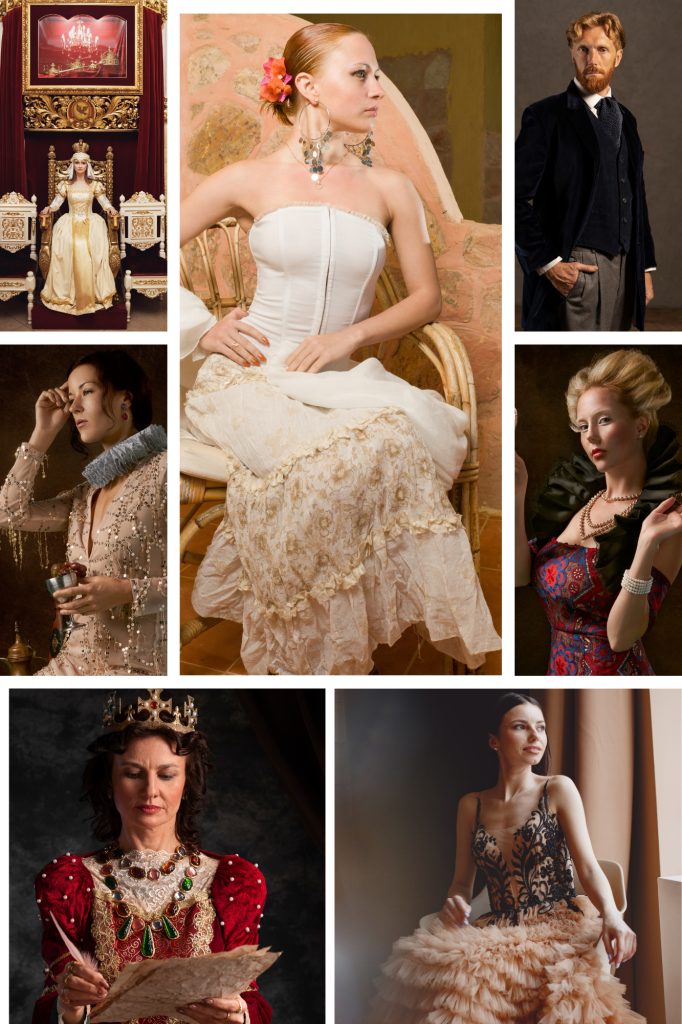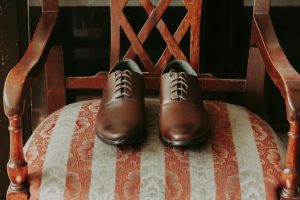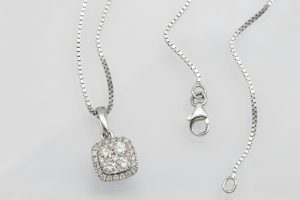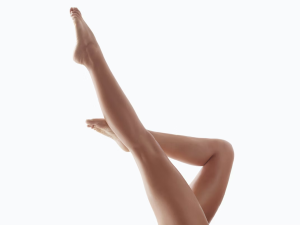“As humanity rediscovered classical beauty, fashion became the canvas upon which the Renaissance painted its dreams of perfection—transforming the human form into living sculpture, where every stitch spoke of wealth, every fold whispered of power, and every garment proclaimed the eternal human desire to transcend natural limitation through the alchemy of cloth and creativity.”
Dinis Guardia
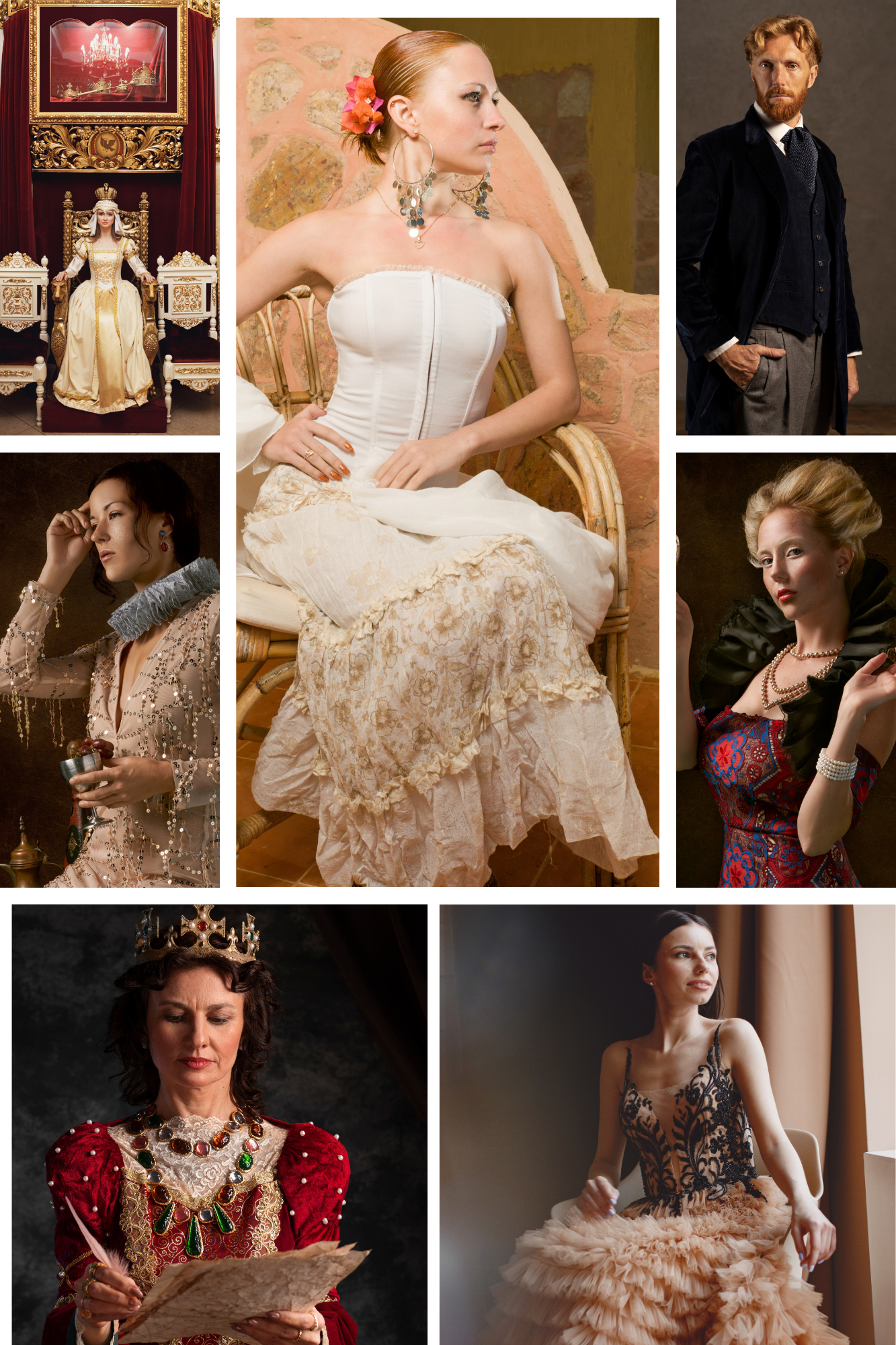
Introduction: The Awakening of Individual Expression
The Renaissance fundamentally reimagined fashion’s possibilities, transforming dress from medieval constraint into humanistic celebration of individual identity and cultural achievement. Between 1485 and 1600, European fashion underwent a metamorphosis so profound that it established aesthetic principles, construction techniques, and social functions that continue to govern contemporary dress. This was not merely evolution but revolution—a radical reconceptualisation of clothing’s relationship to the human body, social power, and artistic expression.
The Renaissance marked a departure from the rigid and somber clothing styles of the Middle Ages, giving rise to a new era of opulence, individualism, and creative expression. Where medieval fashion had emphasised collective identity and religious devotion, Renaissance dress celebrated the individual as worthy of artistic attention. People began to view clothing as an extension of their identity and a reflection of their social status, resulting in the emergence of distinct fashion trends.
This century witnessed fashion’s transformation into high art, worthy of serious intellectual consideration alongside painting, sculpture, and architecture. The 16th century witnessed further changes occurring in Europe. The limitations bounding medieval society were gradually being breached, and the concepts of the Renaissance were being accepted farther west, in France, Flanders, England, and Spain. Fashion became a primary means through which individuals negotiated their place within increasingly complex social hierarchies, expressed newly articulated concepts of selfhood, and participated in the cultural rebirth that defined the age.
Part I: The Foundation of Renaissance Fashion – Materials and Techniques
The Textile Revolution
The sixteenth century witnessed unprecedented innovations in fabric production that fundamentally altered fashion’s possibilities. During the Renaissance, there was a heightened curiosity about the wider world, leading to extensive exploration and trade. This exploration had a profound impact on fashion as new fabrics, colors, and patterns were introduced. The influx of wealth from global exploration created demand for increasingly luxurious materials whilst technical advances in weaving and dyeing enabled previously impossible aesthetic effects.
Luxurious fabrics like silk, velvet, and brocade became increasingly popular, showcasing wealth and prosperity. The use of intricate embroidery, lace, and pearls further enhanced the opulence of garments. Italian silk weavers achieved technical mastery that made their products internationally coveted, with Florence, Venice, and Genoa becoming centres of textile innovation whose influence extended throughout Europe. The development of pattern weaving techniques enabled the creation of fabrics with complex imagery woven directly into the textile—floral motifs, geometric patterns, and even figurative scenes that transformed cloth into narrative art.
The discovery of new dyeing techniques allowed for a broader range of vibrant colors, breaking away from the muted tones of the Middle Ages. Where medieval fashion had been limited to naturally available dyes, Renaissance dyers developed sophisticated techniques for achieving previously impossible hues. Deep purples, vibrant crimsons, rich blacks, and brilliant golds became attainable, enabling fashion to express emotional and symbolic meanings through chromatic sophistication.
The Architecture of Undergarments
Perhaps no innovation better exemplifies Renaissance fashion’s transformative power than the development of structured undergarments that reshaped the human form according to aesthetic ideals. These foundation garments represented humanity’s growing confidence in its ability to improve upon nature, to transform the given into the ideal through technological ingenuity and artistic vision.
The Corset Revolution
The corset emerged in 16th century Renaissance Europe, reshaping both women’s fashion and cultural expectations. Craftsmen constructed these rigid undergarments from stiffened fabric or leather, inserting bones or reeds to create an unyielding frame. The design served a specific purpose: to compress the waist and elevate the bust, forcing the body into an hourglass shape that Renaissance society deemed beautiful.
In the Elizabethan era, pairs of bodies were typically made out of layered fabrics like linen and silk, starched, and stiffened with whalebone. A busk, typically made of wood, ivory, metal, or whalebone, was added to stiffen the front of the bodice. This busk—a flat piece inserted into a pocket in the corset’s front—created the characteristic flat-fronted silhouette that defined Renaissance fashion. The busk could be removed and replaced, often serving as courtship gifts elaborately carved with romantic messages or decorative motifs.
By the end of the sixteenth century, bodies were commonly worn garments among the elites of Europe. The front of the corset was typically covered by a “stomacher,” a stiff, V-shaped structure that was worn on the abdomen for decorative purposes. The stomacher transformed functional undergarment into artistic canvas, elaborately embroidered or jewelled to create visual focal points that drew attention to the wearer’s wealth and taste.
The Farthingale’s Architectural Silhouette
A farthingale is one of several structures used under Western European women’s clothing – especially in the 16th and 17th centuries – to support the skirts in the desired shape and to enlarge the lower half of the body. The fashion originated in Spain in the fifteenth century. This revolutionary garment fundamentally altered women’s relationship to space, creating personal architecture that literally displaced the surrounding environment.
Known as the Spanish farthingale, this early version consisted of a series of hoops made from whalebone, wood, or metal, which were sewn into the skirt of a petticoat. The result was a cone-shaped silhouette that dramatically altered the shape of a woman’s dress. The Spanish farthingale created a conical form that emphasised verticality and grandeur, transforming the female figure into a geometric ideal that recalled classical columns and Renaissance architectural principles.
The Spanish farthingale stands out as a key innovation: this structured underskirt used wooden or whalebone hoops to create a distinctive bell shape that noble women across Europe quickly adopted. The garment captured the essence of Spanish style—commanding attention through dramatic form rather than mere decoration. As Spanish political power dominated sixteenth-century Europe, Spanish fashion spread through royal courts, with the farthingale becoming essential to formal court dress throughout the continent.
The farthingale evolved throughout the century, responding to changing aesthetic preferences. The French farthingale, also known as the wheel farthingale, emerged in the 1570s. This version featured a hoop at the waist that extended horizontally, creating a table-like surface around the wearer’s hips. This extraordinary structure created silhouettes so extreme that women literally had to turn sideways to pass through doorways, transforming simple movement into theatrical performance.
Part II: The Geography of Fashion – Regional Variations and International Influence
Italian Innovation and Artistic Leadership
Italy dominated early Renaissance fashion, establishing aesthetic principles that influenced European dress throughout the century. Italy was a fashion forerunner at the time, and as such Italian portraiture helps us understand what people wore in the fifteenth and sixteenth centuries. Fashion trends in this period were generally set by the aristocracy and upper-classes.
Italian women’s fashion celebrated colour, craftsmanship, and complex layering. Renaissance beauty was not skin deep. In order to be considered beautiful (and fashionable), an early modern woman must also be virtuous. This philosophical approach to dress meant that clothing served not merely aesthetic but moral functions, with specific garments and colours associated with particular virtues.
Women’s clothing, however, offered more complexity and variety throughout the Renaissance. The basic ensemble consisted of multiple layers: the camicia (chemise) worn next to the skin, the gamurra (undergown), and often an outer giornea for special occasions. An outer garment alone could require eight braccia, or a little over five yards (4.5 meters) of fabric, demonstrating the substantial investment required for fashionable dress.
The unknown figure in Portrait of a woman wears a green gamurra, while Giovanna da Tornabuoni wears both layers in her portrait. A woman’s exterior-most gown was the most expensive and ostentatious, as it faced the evaluating world. This layering principle established fashion’s ongoing fascination with revelation and concealment, with glimpses of inner garments providing visual interest and demonstrating the wearer’s complete fashionable ensemble.
Spanish Dominance and Sombre Sophistication
Until about 1510 the style was generated from Italy. After this the Germans and Flemish set the pattern, but from about mid-century it was Spain that dominated the scene. Spanish fashion’s rise paralleled Spain’s emergence as Europe’s dominant political power, with clothing serving as visible manifestation of imperial authority.
Spain’s rise to power in 16th century Europe reshaped how people dressed. Spanish fashion spread through royal courts and noble houses, marked by rich fabrics and bold shapes that set new standards for elite clothing. Spanish fashion emphasised sobriety and grandeur, favouring dark colours—especially black—combined with rich fabrics and minimal but exquisite decoration.
In the sixteenth century, men’s fashions turned towards darker, more somber hues in their fabrics. This shift reflected changing ideals about masculinity, power, and appropriate aristocratic demeanour. The influential courtier Baldassare Castiglione, in his widely read Il Cortegiano (The Courtier, published 1528), advocated for restrained elegance over ostentatious display, establishing principles of masculine dress that emphasised quality over quantity, refinement over decoration.
The inflow of wealth from the Americas fundamentally altered European fashion economics. The inflow of gold and silver from the New World into recently united Spain changed the dynamics of trade throughout Western Europe, ushering in a period of increased opulence in clothing that was tempered by the Spanish taste for sombre richness of dress that would dominate the second half of the century.
English Extravagance and Elizabethan Excess
English fashion during Elizabeth I’s reign (1558-1603) pushed Renaissance aesthetics to magnificent extremes. The farthingale became an essential element of courtly dress, particularly in England during the reign of Elizabeth I. It was during this period that the garment reached its most extreme proportions, with some farthingales extending so far out to the sides that women had to turn sideways to pass through doors.
The Elizabethan court became theatre for fashion display, with clothing serving as visual propaganda for royal power and national magnificence. Portraits of Elizabeth show her adorned in garments of extraordinary complexity—enormous ruffs, jewel-encrusted stomachers, elaborate embroidery covering every visible surface. Fashion became inseparable from statecraft, with the Queen’s appearance carefully controlled to project appropriate messages about divine right, virginal purity, and imperial authority.
French Refinement and Court Culture
France developed distinctive fashion approaches that balanced Italian artistic sensibility with emerging French elegance. Henry VIII of England (ruled 1509–1547) and Francis I of France (ruled 1515–1547) strove to host the most glittering Renaissance court, culminating in the festivities around the Field of Cloth of Gold (1520). This legendary diplomatic meeting between the English and French courts became perhaps history’s greatest fashion display, with both monarchs competing to demonstrate their wealth and taste through clothing of unprecedented magnificence.
French fashion contributed significant innovations, particularly in developing the elaborate ruffs that became signature Renaissance accessories. In 16th-century fashion, the ruff emerged as a defining feature—a stiff, pleated collar that encircled the neck. Made from lace or fine linen, these collars became status symbols for both men and women.
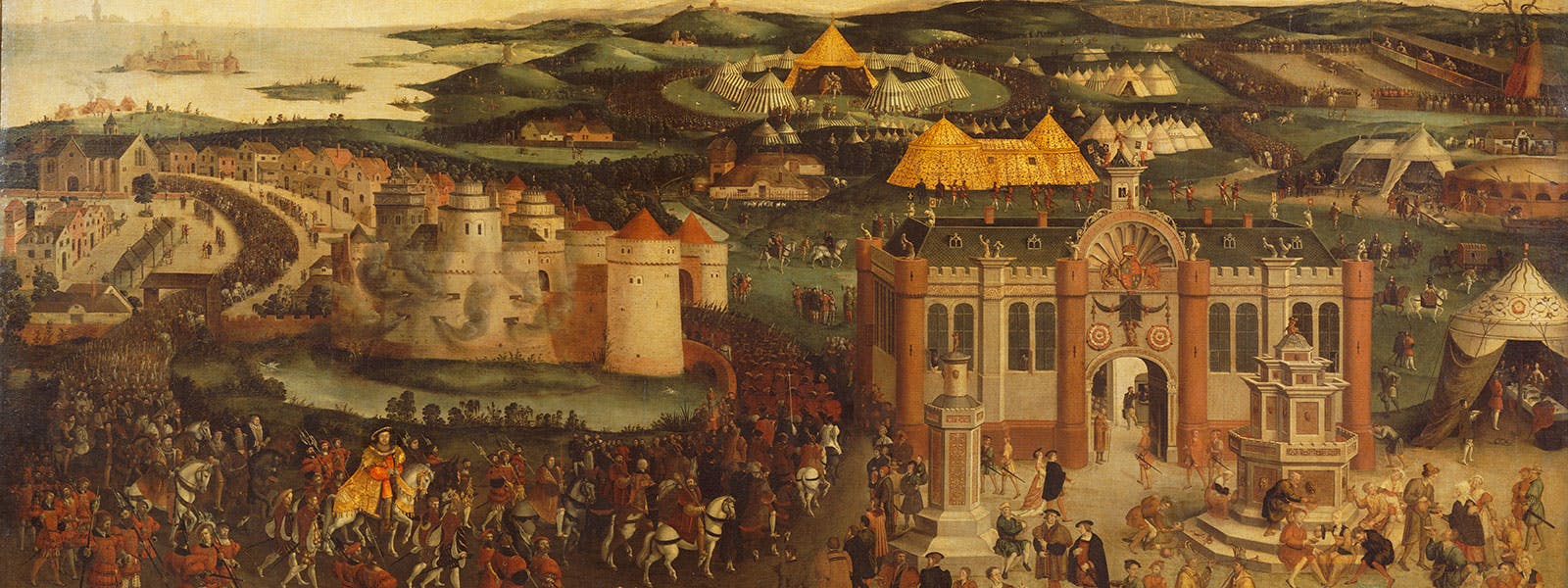
Field of Cloth of Gold (1520)
Part III: Gendered Fashion – Masculine and Feminine Ideals
Women’s Fashion: Architectural Beauty
Renaissance women’s fashion created artificial silhouettes that transformed the natural female form into geometric ideals celebrating both sensuality and restraint. The essential components created complex ensembles requiring significant time, wealth, and assistance to achieve.
The Foundation: Chemise and Undergarments
The linen chemise formed the foundation of 16th-century dress for both men and women. This light undergarment shielded skin from coarse outer fabrics while protecting expensive garments from body oils and sweat. The chemise remained largely invisible, though strategic glimpses through slashed sleeves or above necklines provided visual interest whilst demonstrating the wearer’s possession of multiple layers of costly garments.
Over the chemise, women wore the corset or “pair of bodies” that reshaped the torso into the fashionable conical form. The feminine figure was artificially controlled by a tight underbodice with metal or whalebone strips in the seams to give a small waist and slender torso. This was the precursor of the corset.
The Structure: Kirtle and Farthingale
The kirtle served as an intermediate layer, providing additional structure and warmth. Women’s fashions of the early 16th century consisted of a long gown, usually with sleeves, worn over a kirtle or undergown, with a linen chemise or smock worn next to the skin. The kirtle’s construction varied by region and changed throughout the century, responding to evolving aesthetic preferences.
The farthingale created the characteristic silhouette that defined sixteenth-century women’s fashion. The skirt was shaped into a cone or inverted-V silhouette by being draped over a petticoat made from canvas and inset at intervals with circular hoops of wicker. This architectural foundation supported the weight of elaborate outer gowns whilst creating the geometric precision that Renaissance aesthetics demanded.
The Display: Gowns and Decoration
Outer gowns showcased the wearer’s wealth and taste through fabric quality, decorative sophistication, and construction complexity. Women’s clothing gained depth through strategic openings in sleeves. These slashes revealed glimpses of the undershirt, creating visual layers that transformed simple garments into complex statements of style.
Sleeves became a particular focus for decorative innovation, often detachable to allow mixing and matching with different gowns. Sleeves were puffed and slashed, or elaborately cuffed, creating opportunities for displaying contrasting fabrics, linings, and the chemise beneath. The construction and decoration of sleeves could be as expensive as the gown itself, with some elaborately embroidered or jewelled sleeves representing extraordinary investments in fashionable display.
Men’s Fashion: Power Through Restraint
Renaissance men’s fashion evolved toward increasing sobriety, particularly in the century’s second half, whilst maintaining emphasis on quality, construction, and subtle signals of wealth and status.
The Masculine Silhouette
Men’s fashion of the 1530s was dominated by the broad-shouldered silhouettes made iconic by King Henry VIII. The characteristic masculine form emphasised wide shoulders, narrow waists, and muscular legs, creating an imposing physical presence that projected power and authority.
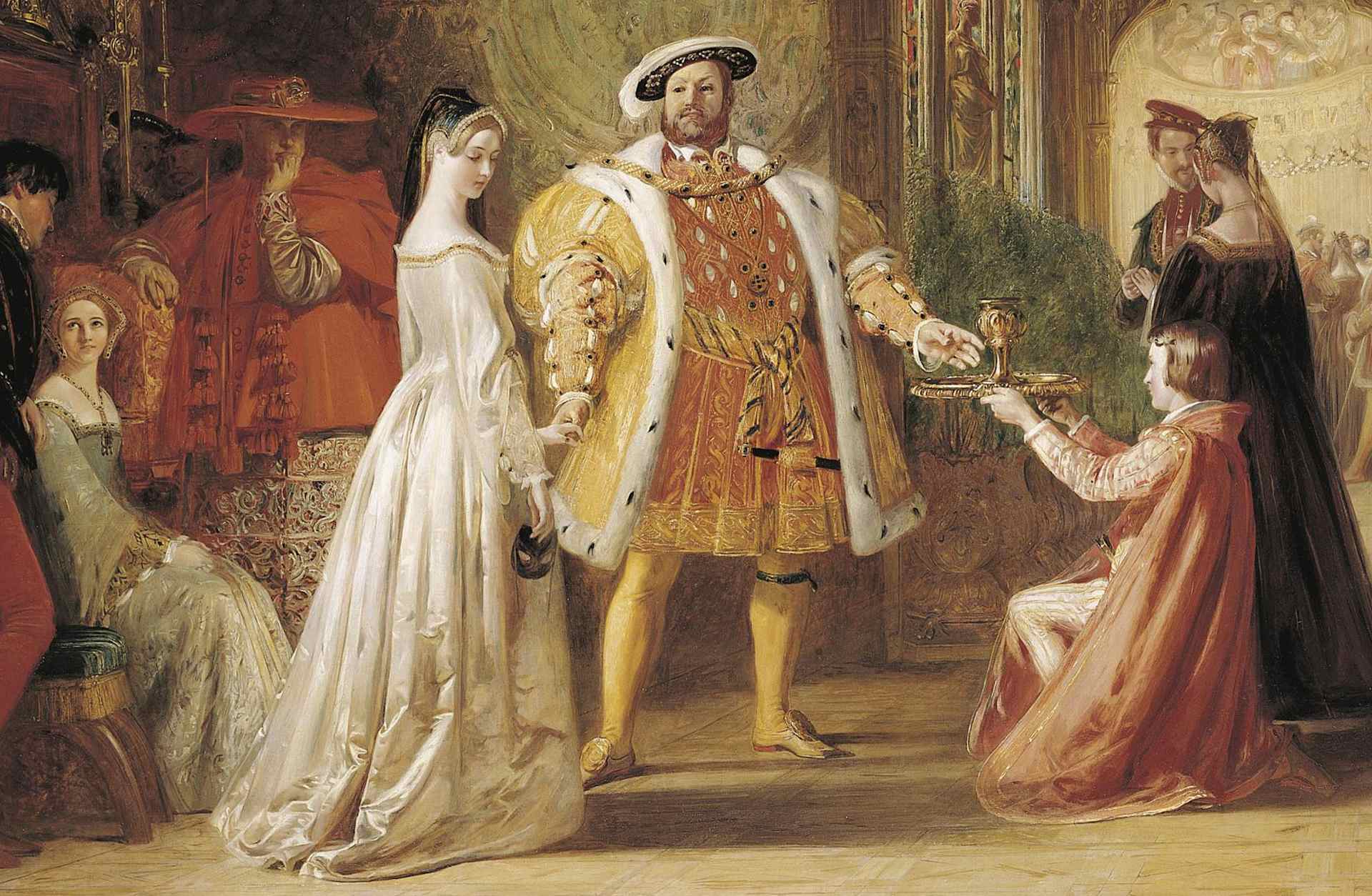
King Henry VIII. Source: The Met
The doublet—a close-fitting jacket—served as the foundation of men’s fashion. Originally created as the join between the two hoses at the groin, the codpiece eventually became an ornate piece of male dress in the 16th century. This overtly masculine garment element proclaimed virility whilst serving practical functions, eventually becoming so elaborate that some were jewelled, padded, or decorated with ribbons.
Layering and Complexity
Men’s ensembles comprised multiple layers creating both visual interest and practical flexibility. Over the shirt came the doublet, often elaborately decorated with slashing, embroidery, or applied decorations. The jerkin—a sleeveless jacket—was worn over the doublet, adding another layer of visual complexity.
Hose were sewn together from differently coloured pieces of fabric, each leg might be different in color, and the lower part was often of a different color than the upper part. The codpiece, which at first had been a simple flap, grew in size and decoration. By mid-century, men’s hose had evolved into trunk hose—short, puffed breeches that could reach extraordinary dimensions through padding and construction.
The Turn Toward Sobriety
Baldassare Castiglione, writer of a popular book on etiquette, The Courtier (published 1528), tells upper-class men how to dress. Castiglione insists he: “…would like our courtier always to appear neat and refined and to observe a certain modest elegance, though he should avoid being effeminate or foppish in his attire and not exaggerate one feature more than another.” Sixteenth-century men dressed down to display seriousness and sobriety.
This philosophical shift influenced fashion throughout Europe, with men increasingly favouring dark colours—especially black—combined with superlative fabric quality and impeccable tailoring. Men’s tunics, jackets, and stockings were generally tailored from black or dark brown luxury fabrics like velvet or silk. The emphasis moved from colourful display to subtle signals of wealth through fabric quality, construction sophistication, and perfect fit.
Part IV: Accessories and Details – The Devil’s Divine Work
The Ruff: Neck Architecture
In 16th-century fashion, the ruff emerged as a defining feature—a stiff, pleated collar that encircled the neck. Made from lace or fine linen, these collars became status symbols for both men and women. The ruff evolved from simple gathered collars at century’s beginning to extraordinary structures requiring complex construction and maintenance by century’s end.
In 1520-1529, men and women both began to wear shirts with high standing collars ending in a frill at the neck and cuff, which would later evolve into the ruff. This evolution demonstrates fashion’s tendency toward increasing elaboration, with simple functional elements transformed into statement pieces requiring specialised knowledge to create and maintain.
By the 1580s and 1590s, ruffs reached extraordinary proportions, some extending nearly a foot from the neck, creating the characteristic “head on a platter” appearance seen in late Elizabethan portraits. These cartwheel ruffs required complex construction using figure-eight pleats, starching with specialized recipes, and supporting wires or structures to maintain their shape. The maintenance alone demonstrated the wearer’s wealth, as ruffs required regular laundering, re-starching, and setting—services provided by specialists charging substantial fees.
Slashing and Paning: Decorative Innovation
An extremely popular decorative edging technique created by cutting that reached its height during the Middle Ages and Renaissance, slashing transformed garments into opportunities for displaying multiple fabrics simultaneously. Strategic cuts in outer garments revealed contrasting linings or the garments beneath, creating visual complexity through layered colour and texture.
Paning—creating openings through which puffed fabric was pulled—achieved similar effects through construction rather than cutting. Both techniques demonstrated the wearer’s possession of multiple layers of costly fabric whilst creating three-dimensional surface interest that suggested richness and abundance.
Footwear: From Function to Fashion
During the 1500s, European footwear underwent a clear shift: pointed toes vanished, replaced by square-toed designs. This change touched both men’s and women’s shoes—a key feature of Renaissance style. The broad, square-toed shoe called the “cow-mouth” or “duck’s bill” dominated early century fashion, its wide toe box sometimes extending to extraordinary widths.
Venetian-made CHOPINES, 15th – 16th century, created platform elevations that could reach extraordinary heights. These platform shoes, popular particularly in Venice, elevated wearers by inches or even feet, creating practical challenges whilst demonstrating wealth through the requirement for assistance in walking and the display of expensive stockings and underskirts visible when walking.
In the year 1533, the small Caterina de’Medici, Princess of Urbino, came from Italy to France to marry the Duke of Orleans and she wore high heels to appear taller. Many female members of the French Court soon copied this fashion. This innovation began the high heel’s journey toward becoming a fashion staple, though widespread adoption awaited the following century.
Hair and Headdress: Crowning Glory
During the Renaissance, noblewomen transformed their hair into architectural masterpieces. They wove braids into precise patterns, twisted strands into geometric shapes, and looped sections skyward. Hairstyles became increasingly elaborate throughout the century, requiring significant time and often artificial additions to achieve fashionable effects.
Renaissance portraits show braids arranged in many, many ways and styles. Hair-pieces would have had to be added for the opulent hairdos. Young unmarried women wore hair loose or simply dressed, whilst married women covered their hair with increasingly elaborate headdresses that signalled marital status whilst providing opportunities for displaying wealth through jewelled ornaments, precious fabrics, and skilled construction.
The Balzo was an opulent headpiece which first came up in the early 15th century in Italy, looking much like a turban or a large circle or half-moon around the head. It was made of wire, padding and hard-wearing linen like buckram, covered with precious fabrics, pearls, braid and fur. Regional variations created distinctive national styles—the French hood, the English gable hood, the Italian balzo—each proclaiming the wearer’s cultural affiliation whilst demonstrating construction sophistication.
The Ferronnière was a head ornament primarily fashionable in the 15th century in Italy. It consisted of a thin ribbon or thread (usually black) on which centrally a jewel was attached. These delicate ornaments demonstrated how even minimal accessories could make maximum impact when properly deployed, with a single jewel centred on the forehead creating focal point that drew attention to the wearer’s face whilst displaying wealth through the gem’s quality.
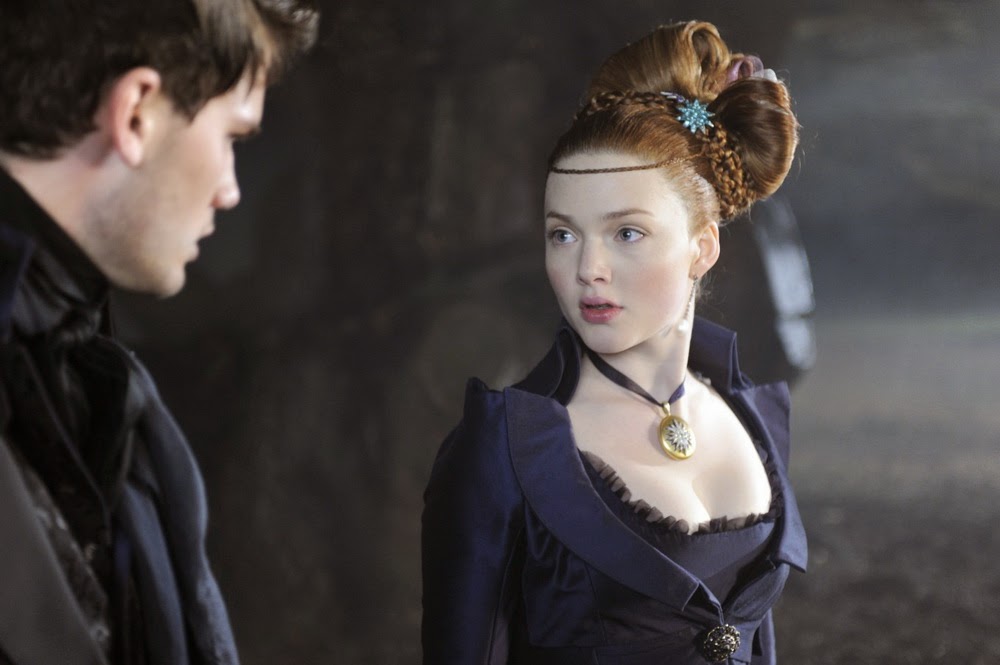
Halliday Grainger wearing the Ferronnière in “The Great Expectations”
Part V: Fashion and Society – Power, Politics, and Performance
Fashion as Social Stratification
Renaissance fashion wasn’t just about style; while the garments worn by the upper classes were beautiful, the hierarchy of clothing was a reflection of social status and power at the time. Sumptuary laws throughout Europe attempted to regulate fashion consumption, specifying exactly what fabrics, colours, and styles could be worn by different social classes.
These regulations reveal fashion’s threatening power to blur social boundaries. If clothing instantly communicated social status, then inappropriate dressing threatened social order itself. The wealthy merchant’s wife who dressed above her station challenged aristocratic exclusivity; the servant who affected fashionable airs questioned established hierarchies. Fashion’s power to transform appearance made it subject to legal control, with violations sometimes punished severely.
Yet sumptuary laws proved largely unenforceable, as people consistently chose fashionable display over legal compliance. The desire to dress fashionably apparently exceeded fear of punishment, suggesting fashion’s profound importance to Renaissance identity formation and social negotiation.
The Economics of Fashion
During the Renaissance, creating textiles was extremely expensive and time-consuming, so clothing was often recycled. If a dress was torn, stained, or became too small for its wearer, it would be cut, re-stitched, and reused as a seat cushion cover, for example, or clothing for children. This recycling demonstrates both clothing’s substantial value and Renaissance practicality about material goods.
The substantial investment required for fashionable dress meant that wardrobes represented significant wealth. Royal and aristocratic wardrobes contained hundreds of garments, with detailed inventories recording each item’s materials, construction, and value. These wardrobe accounts provide invaluable information about fashion practices whilst demonstrating clothing’s role as storehouse of wealth—garments could be pawned, given as diplomatic gifts, or bequeathed to heirs.
Fashion and Portraiture: Immortalising Identity
Art and culture played a significant role in shaping Renaissance fashion. Paintings and sculptures of the era showcased elaborate and luxurious clothing, providing inspiration for the fashion-conscious. Portraiture became essential medium for displaying fashionable attire, with sitters commissioning paintings partly to immortalise their magnificent clothing.
Portraits became an essential medium for displaying wealth and status, with individuals commissioning paintings to immortalize their fashionable attire. These portraits served multiple functions: documenting the sitter’s appearance, demonstrating their taste and wealth, and circulating their image—and thus their fashionable clothing—beyond their physical presence. Fashion and portrait painting developed symbiotically, each influencing the other’s development.
Because pieces of clothing (and complete outfits) are so scarce, we must instead rely on pictorial media to understand what Renaissance peoples considered fashionable. While paintings are not always perfect mirrors of the past, they give us the best available estimation. This reliance on visual representation means our understanding of Renaissance fashion comes filtered through artistic conventions, raising fascinating questions about the relationship between lived fashion experience and its representation in art.
Part VI: The Legacy of Renaissance Fashion
Enduring Influence on Modern Dress
To conclude this brief lesson on Renaissance clothing history, it’s important to take a look at just how much Renaissance era fashion still impacts how we dress today in the 21st century. From babydoll dresses to tie-up corsets, so much of our modern style can be traced back to different types of Renaissance dresses and clothes.
The Renaissance established fundamental fashion principles that govern contemporary dress: the use of structured undergarments to shape silhouette, the layering of garments for visual complexity, the emphasis on accessories as focal points, and the relationship between fashion and identity expression. Contemporary fashion continues to reference Renaissance aesthetics through corsetry revivals, puffed sleeves, slashing effects, and elaborate embellishment techniques.
Technical Innovation and Craft Excellence
The Renaissance also saw a departure from the restrictive and constricting clothing styles of the past. The advent of the tailor’s art allowed for more fitted garments that highlighted the natural contours of the body. The sixteenth century established tailoring as specialised craft requiring years of apprenticeship, creating professional standards and guild structures that elevated clothing construction to recognised art form.
The technical achievements of Renaissance tailors, embroiderers, lace-makers, and textile producers established standards of excellence that continue to influence luxury fashion. The attention to detail, commitment to quality, and pursuit of perfection that characterised Renaissance craftsmanship remain ideals toward which contemporary fashion aspires.
Framework Summary: Structural Analysis of Renaissance Fashion
Geographic Distribution
| Region | Key Characteristics | Signature Elements | Influential Period |
| Italy | Colour, artistry, layered complexity | Gamurra, giornea, elaborate embroidery | 1485-1520 (dominant) |
| Spain | Sombre richness, structured silhouettes | Farthingale, black velvet, geometric precision | 1520-1600 (dominant) |
| England | Extreme elaboration, theatrical display | Cartwheel ruffs, jewelled stomachers | 1558-1603 (peak) |
| France | Refined elegance, diplomatic fashion | French hood, sophisticated tailoring | Throughout period |
| Germany | Regional variation, distinctive construction | Gollers, paned sleeves | 1500-1550 |
Garment Construction Hierarchy
Women’s Essential Layers (Bottom to Top):
- Chemise (camicia) – linen undergarment
- Stockings (calze) – embroidered for upper classes
- Corset/Bodies – structured torso shaping
- Farthingale – skirt-shaping structure
- Kirtle – undergown providing warmth and structure
- Gown (gamurra) – primary visible garment
- Overgown (giornea) – luxury outer layer for formal occasions
- Accessories – ruffs, partlets, stomachers, jewellery
Men’s Essential Layers:
- Shirt (camicia) – linen foundation
- Hose/Stockings – leg covering
- Codpiece – masculine emphasis
- Doublet – fitted jacket
- Jerkin – sleeveless overjacket
- Trunk hose/Breeches – padded leg covering
- Gown/Cloak – outer layer
- Accessories – ruffs, hats, weapons as fashion
Timeline of Key Innovations
| Decade | Innovation | Impact |
| 1485-1500 | Spanish farthingale development | Geometric silhouette establishment |
| 1500-1520 | Italian fabric supremacy | Luxury textile standards |
| 1520-1530 | Corset standardisation | Body reshaping normalised |
| 1530-1540 | Codpiece elaboration | Masculine display peak |
| 1540-1550 | Ruff emergence | Neck ornamentation begins |
| 1550-1560 | Spanish fashion dominance | Black clothing supremacy |
| 1560-1570 | French farthingale innovation | Horizontal silhouette expansion |
| 1570-1580 | Cartwheel ruff development | Maximum collar elaboration |
| 1580-1590 | Elizabethan excess | Fashion extremity peak |
| 1590-1600 | Transition toward Baroque | Movement away from rigid structure |
Social Functions of Dress
Communicative Purposes:
- Status Display: Fabric quality, garment quantity, decoration expense
- Gender Performance: Distinct masculine/feminine silhouettes
- Cultural Affiliation: Regional styles signalling origin/loyalty
- Marital Status: Headdress styles, colour choices
- Occupational Identity: Professional dress codes
- Political Allegiance: Court fashion adoption
- Religious Devotion: Modest versus elaborate dress debates
- Age Appropriation: Youth versus mature styles
Conclusion: Revolution Complete
The sixteenth century fundamentally reimagined fashion’s possibilities, establishing principles that continue to govern contemporary dress whilst demonstrating clothing’s power to shape not merely appearance but identity, social relations, and cultural meaning. The Renaissance transformation of fashion from medieval simplicity to extraordinary complexity represented humanity’s growing confidence in its ability to improve nature through art and technology.
The period spanning the 14th to the 17th century witnessed dramatic changes in fashion that mirrored the broader shifts in art, culture, and politics of the time. Fashion became inseparable from the Renaissance project of human self-actualisation, with clothing serving as primary medium through which individuals expressed newly articulated concepts of selfhood, negotiated increasingly complex social hierarchies, and participated in the cultural revolution transforming European civilisation.
The technical innovations—structured undergarments, sophisticated tailoring, revolutionary textile production—established craft traditions and construction techniques that remain fundamental to fashion. The aesthetic achievements—harmonious proportions, chromatic sophistication, decorative complexity—created beauty standards that continue to influence contemporary taste. The social functions—status display, identity expression, political communication—demonstrated fashion’s power as cultural technology for negotiating human relationships.
As Renaissance fashion evolved toward the theatrical extremes of late Elizabethan dress, it prepared the ground for Baroque elaboration whilst establishing eternal principles: that fashion serves both practical and aesthetic purposes, that clothing constructs as much as reflects identity, that the human desire for beautiful self-presentation
Dinis Guarda is an author, academic, influencer, serial entrepreneur, and leader in 4IR, AI, Fintech, digital transformation, and Blockchain. Dinis has created various companies such as Ztudium tech platform; founder of global digital platform directory businessabc.net; digital transformation platform to empower, guide and index cities citiesabc.com and fashion technology platform fashionabc.org. He is also the publisher of intelligenthq.com, hedgethink.com and tradersdna.com. He has been working with the likes of UN / UNITAR, UNESCO, European Space Agency, Davos WEF, Philips, Saxo Bank, Mastercard, Barclays, and governments all over the world.
With over two decades of experience in international business, C-level positions, and digital transformation, Dinis has worked with new tech, cryptocurrencies, driven ICOs, regulation, compliance, and legal international processes, and has created a bank, and been involved in the inception of some of the top 100 digital currencies.
He creates and helps build ventures focused on global growth, 360 digital strategies, sustainable innovation, Blockchain, Fintech, AI and new emerging business models such as ICOs / tokenomics.
Dinis is the founder/CEO of ztudium that manages blocksdna / lifesdna. These products and platforms offer multiple AI P2P, fintech, blockchain, search engine and PaaS solutions in consumer wellness healthcare and life style with a global team of experts and universities.
He is the founder of coinsdna a new swiss regulated, Swiss based, institutional grade token and cryptocurrencies blockchain exchange. He is founder of DragonBloc a blockchain, AI, Fintech fund and co-founder of Freedomee project.
Dinis is the author of various books. He has published different books such “4IR AI Blockchain Fintech IoT Reinventing a Nation”, “How Businesses and Governments can Prosper with Fintech, Blockchain and AI?”, also the bigger case study and book (400 pages) “Blockchain, AI and Crypto Economics – The Next Tsunami?” last the “Tokenomics and ICOs – How to be good at the new digital world of finance / Crypto” was launched in 2018.
Some of the companies Dinis created or has been involved have reached over 1 USD billions in valuation. Dinis has advised and was responsible for some top financial organisations, 100 cryptocurrencies worldwide and Fortune 500 companies.
Dinis is involved as a strategist, board member and advisor with the payments, lifestyle, blockchain reward community app Glance technologies, for whom he built the blockchain messaging / payment / loyalty software Blockimpact, the seminal Hyperloop Transportations project, Kora, and blockchain cybersecurity Privus.
He is listed in various global fintech, blockchain, AI, social media industry top lists as an influencer in position top 10/20 within 100 rankings: such as Top People In Blockchain | Cointelegraph https://top.cointelegraph.com/ and https://cryptoweekly.co/100/ .
Between 2014 and 2015 he was involved in creating a fabbanking.com a digital bank between Asia and Africa as Chief Commercial Officer and Marketing Officer responsible for all legal, tech and business development. Between 2009 and 2010 he was the founder of one of the world first fintech, social trading platforms tradingfloor.com for Saxo Bank.
He is a shareholder of the fintech social money transfer app Moneymailme and math edutech gamification children’s app Gozoa.
He has been a lecturer at Copenhagen Business School, Groupe INSEEC/Monaco University and other leading world universities.


